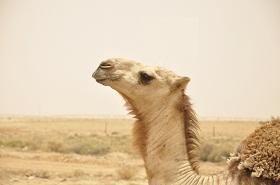Using AI to control energy for indoor agriculture
30 September 2024
Published online 24 June 2010

The Arabian camel, Camelus dromedarius, has joined the small, exclusive club of mammals that have undergone full genome sequencing and analysis.
Scientists from the King Abdulaziz City for Science and Technology (KACST) in Saudi Arabia, and the Beijing Genomics Institute (BGI–Shenzhen) in China, announced earlier this month that all 2.2 billion nucleotides in the Arabian camel's genome have been sequenced. This is the first animal to be completely sequenced in Saudi Arabia.
"The sequencing of any mammalian genome is a major accomplishment. The importance of making the data available is amplified when it is an animal with the camel's agricultural, cultural and historical significance," John Quackenbush, who is a professor of computational biology and bioinformatics in the Department of Biostatistics at the Harvard School of Public Health in Boston, Massachusetts, told Nature Middle East.
The research revealed a strong similarity between the camel genome and those of other mammals, especially cattle. Around 57% of the camel's genetic code is also found in the human genome.
"This will help us conduct experiments that attempt to define functional characteristics of camel genes," Hasan Otu, who is a professor at Harvard Medical School, told Nature Middle East.
"The results of such analyses will lead to genetic, genomic and epigenomic data that will explain mechanisms active in camels at certain states of health and disease."
We can try to use insights learned from the camel’s unique immune system, which, for example, possesses special heavy chain-only antibodies, to improve human health.
The Arabian camel is unique in its ability to tolerate extreme conditions while living in the harsh desert. "Unlocking the camel genome will facilitate the identification of genes that explain how camels adapt to their habitat," Mohamed Al-Fageeh, who is the director of the National Centre for Biotechnology in KACST and co-coordinator of the Arabian camel genome project, told Nature Middle East.
The researchers hope to use the data gathered to advance camel breeding programmes for selected traits, such as strength and the production of milk, meat and wool.
"The genome sequence provides the opportunity to identify genes that can be mapped to various traits and markers. This can be used to assist in breeding animals with, for example, improved resistance to disease," added Quackenbush.
Understanding how the genome affects traits is, however, not a straightforward process, warned Quackenbush. Most traits are not influenced by a single gene, but by extensive networks of genes and proteins. "Decoding these complex relationships can take years, but having the genome sequence is an important first step in the process."
KACST plans to expand its research to look at other breeds of camels, and other local livestock and endangered species. "Simultaneously, the generated data of this project will be further refined and analysed in depth, through post-genomic research, to bring the scientific findings into application," said Al-Fageeh.
"As a scientist, the most important aspect of this project is that it has given the world an important new genome sequence that can be compared to those of other species," said Quackenbush. "In this sense, it is a tremendous resource for comparative genome analysis, a process that helps us understand our place in the world, our relationships to other creatures, and our similarities and differences."
doi:10.1038/nmiddleeast.2010.166
Stay connected: